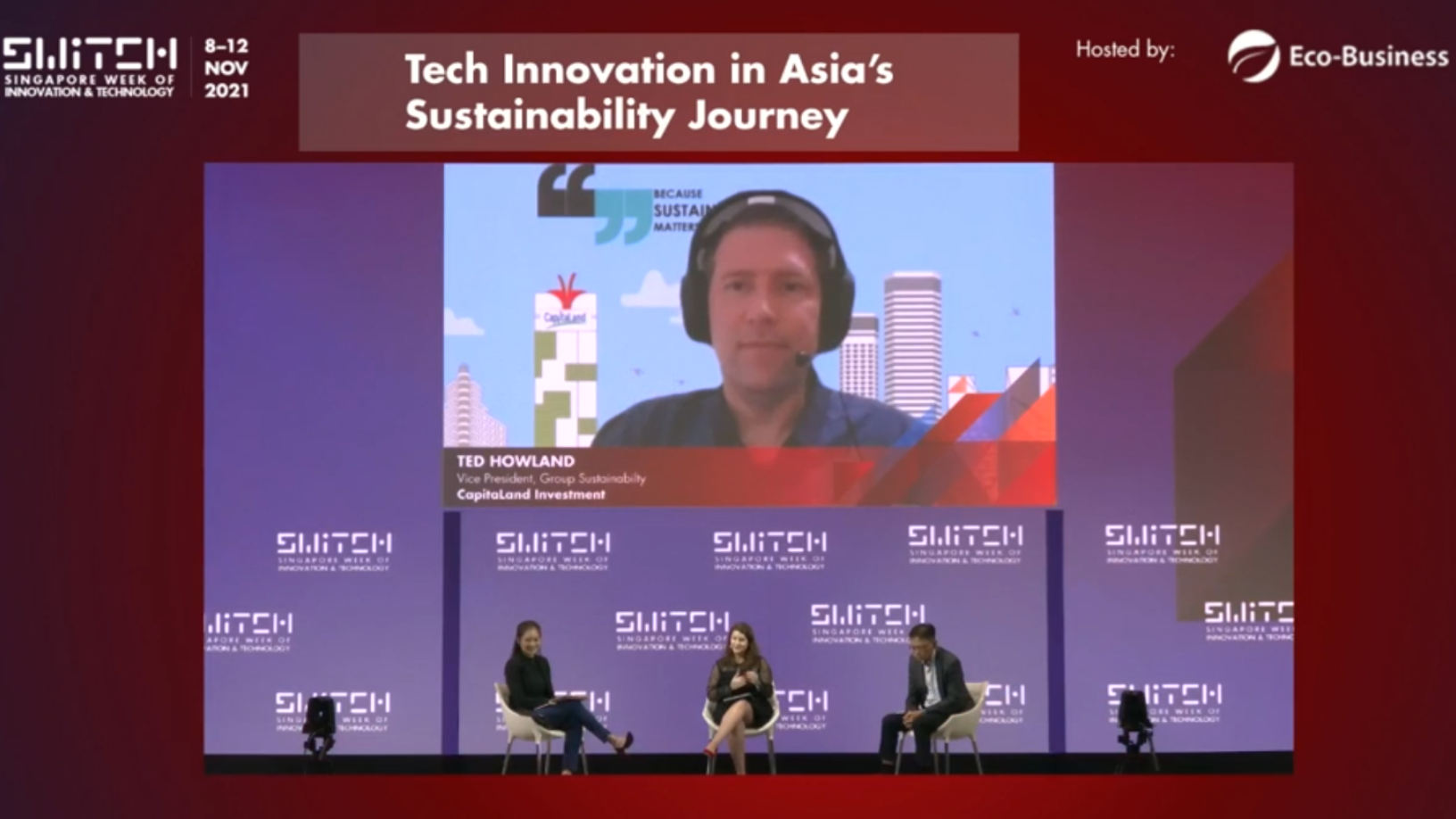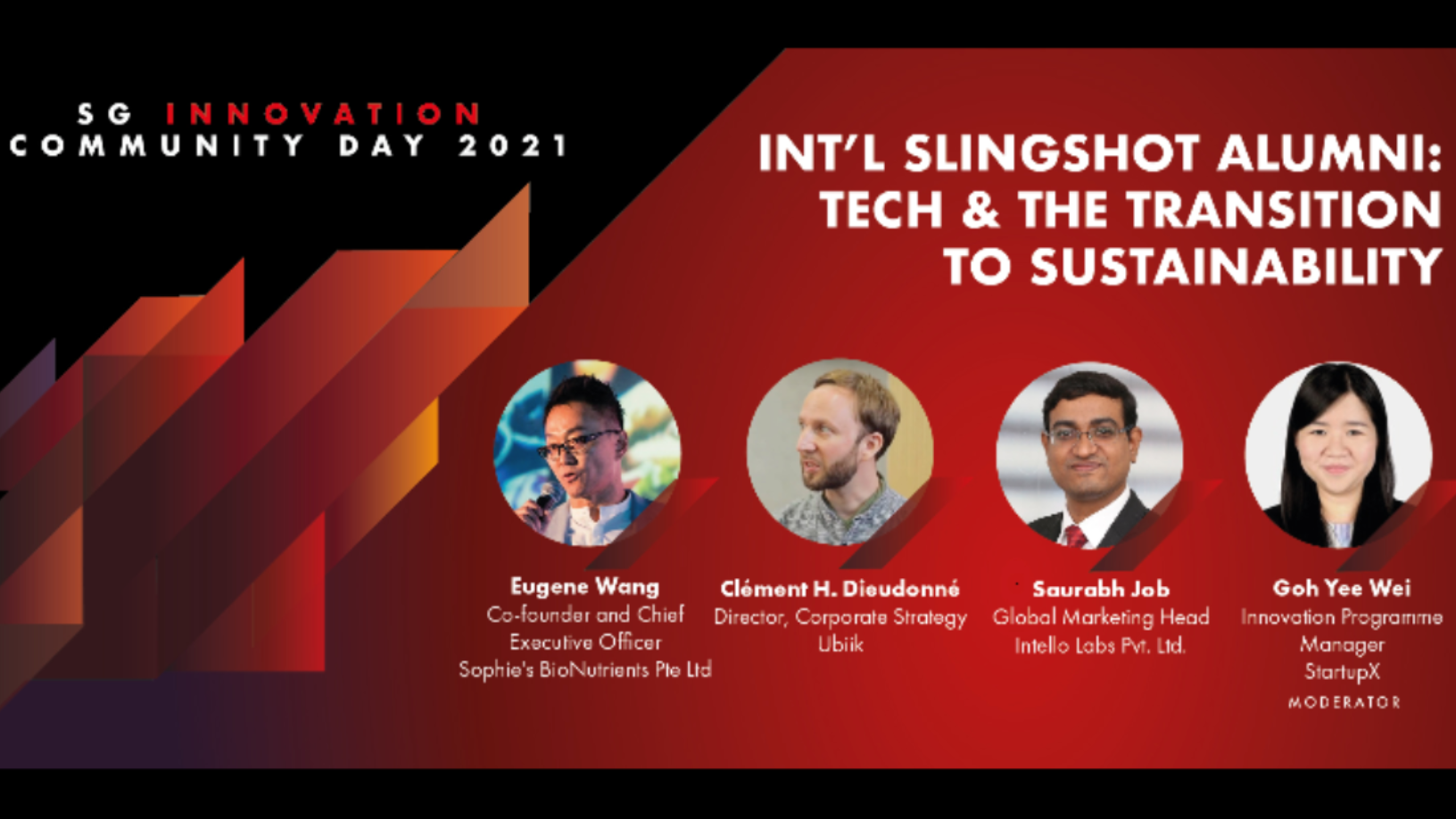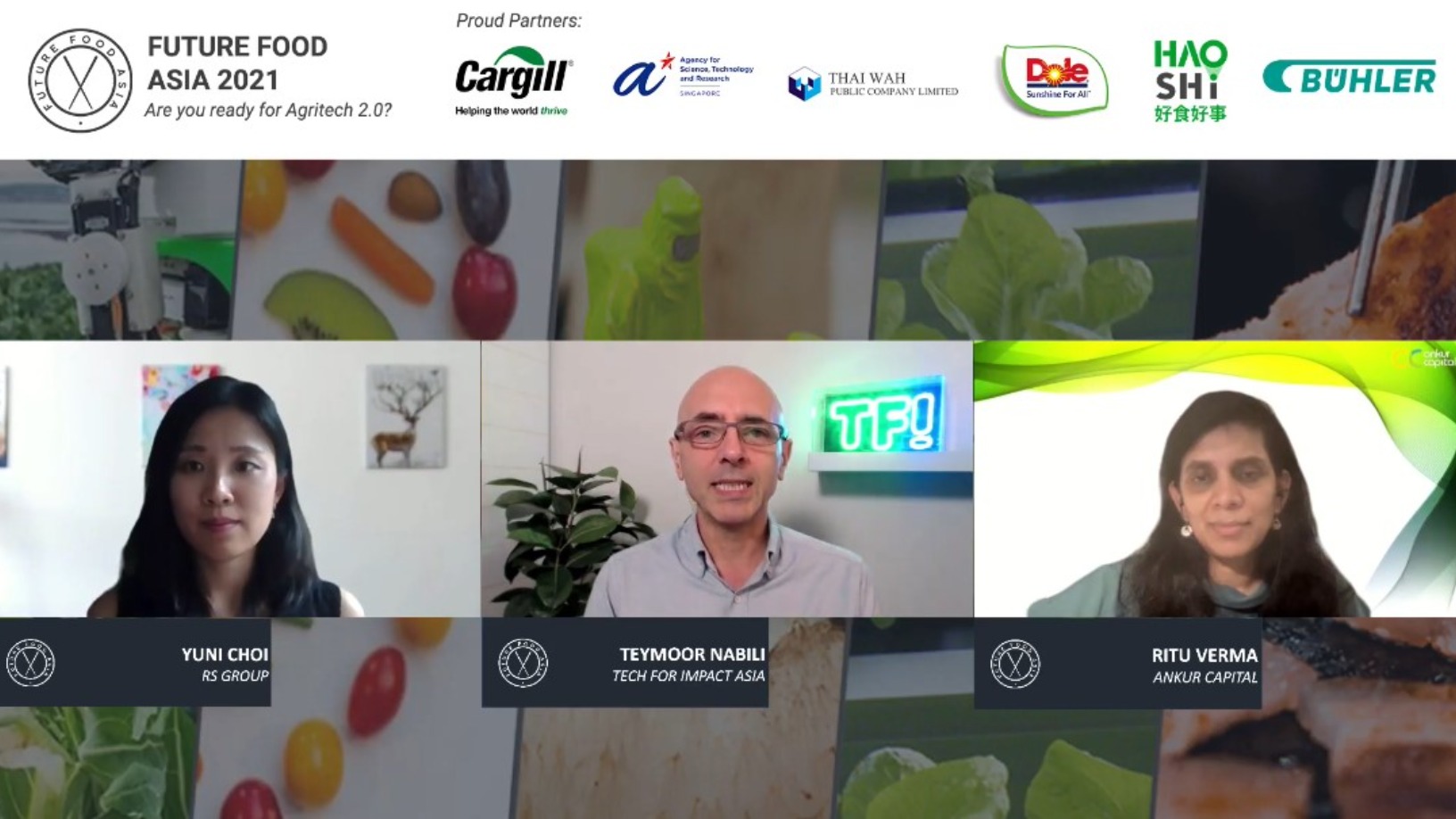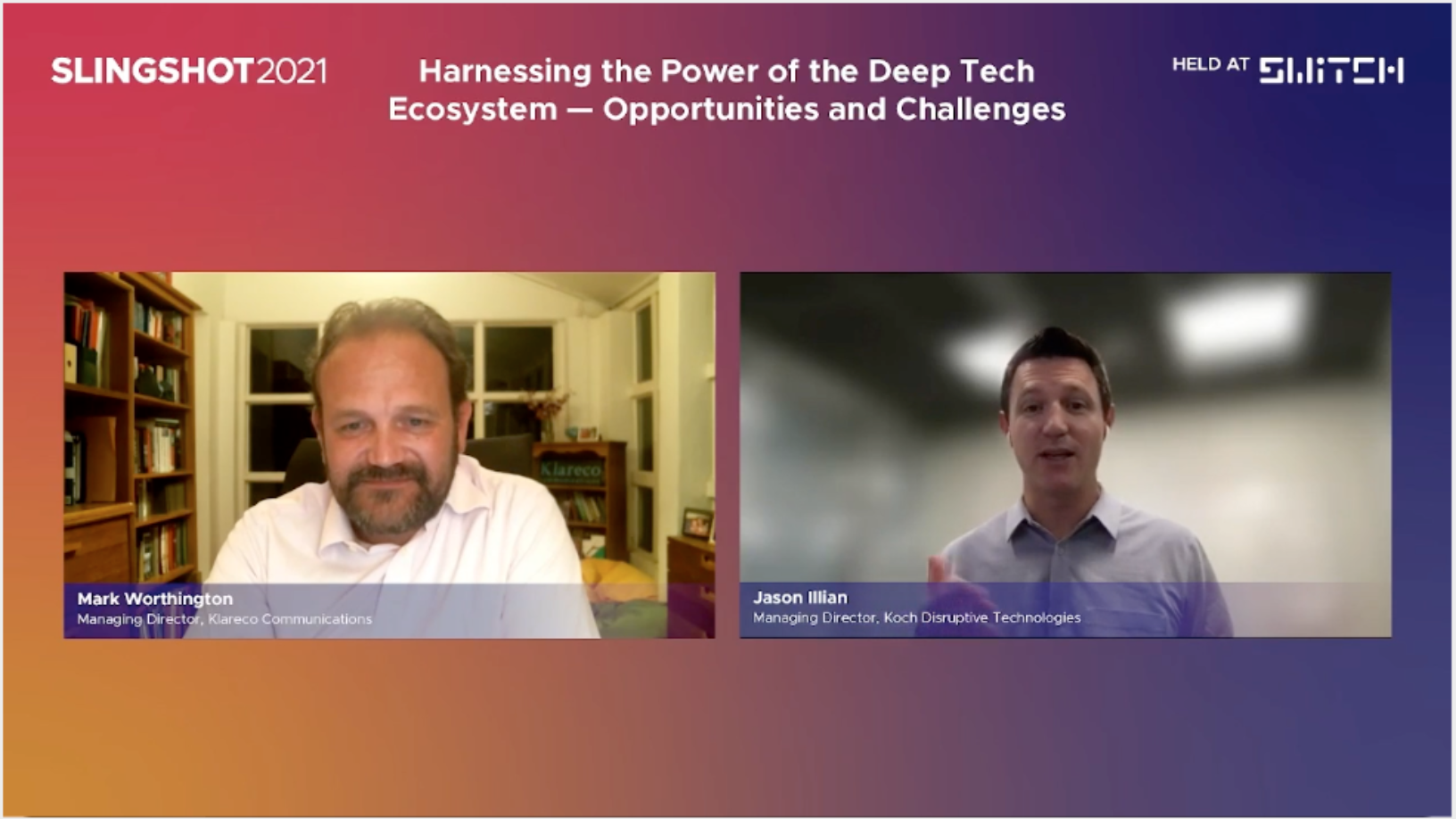Technology is a key force in driving sustainability solutions, but fostering the adoption of hi-tech products remains a huge challenge, especially in underprivileged regions. At this week’s Singapore Week of Innovation and TeCHnology (SWITCH) conference, industry experts explored how public private partnerships can help accelerate the translation, deployment and commercialization of tech innovations for sustainability in Southeast Asia.
In the panel discussion, Tech Innovation in Asia's Sustainability Journey, on November 8, moderated by Meaghan See, Director of Partnerships at Eco-Business, speakers also shared what businesses and startups could do to tap various sustainability opportunities in the ASEAN region, estimated to worth $1tn.
Speaking were Ted Howland, VP of Group Sustainability at CapitaLand, Southeast Asia’s largest real estate group; Marcus Lim, CEO and co-founder of water and waste treatment tech startup ECOSOFTT; and Lorena Paglia, Regional Leader of Customer Experience and Sustainability, of Microsoft Asia.
The following discussion has been edited for length and clarity.
Meaghan See: How can we accelerate tech for sustainability in the Asian context?
Ted Howland: Accelerating technology for sustainability is already a key focus of ours. Our annual CapitaLand Sustainability X Challenge (CSX) received over 270 entries from more than 25 countries. The Challenge uses the built environment to provide startups with a platform to demonstrate how their technology works in the real world. Two winners will get S$50,000 ($1= S$1.35) each to fund their pilot projects. The next round CSX 2022 will be accepting applications soon.
We also have our own internal programs such as a CapitaLand Innovation Fund, for which we have set aside S$50m to support testbeds of sustainability and other technological innovations within the CapitaLand ecosystem.
We also collaborate with other players. Last year, CapitaLand opened the Smart Urban Co-innovation Lab at Singapore Science Park in partnership with Infocomm Media Development Authority and Enterprise Singapore. It's the first industry-led lab in Southeast Asia to focus on smart city solutions.
We also set a target of S$6bn in sustainable financing, the first real estate company in Singapore to set up a public sustainable finance target. CapitaLand’s current sustainability loans, which are tied to our performance, have resulted in interest rate savings.
Marcus Lim: For startups to have a chance when competing against established players, we’ve got to have something novel to offer to the customers. When we started, we went to customers and said that we've got this technology. They would ask where you have done this before, and we said nowhere. We are startups, and have not applied this anywhere. That’s why it’s novel.
But these kinds of answers are not good enough. Customers want something innovative, but also want something that has got a fair chance of succeeding. So that's where the value of pilots or testbeds come in.
Lorena Paglia: We had a pivotal point of a net zero journey. What we're seeing right now is significant momentum. We've seen two years’ worth of transformation take place in two months. Companies are doing this at a pace we've never been able to do before. They've got access to sustainable solutions and digital solutions that weren't available before.
We've seen two years’ worth of transformation take place in two months
When it comes to Asia, we really need to be acting now as individuals, as leaders of businesses, and as ecosystems. Otherwise, we will be too late. Sustainability is everyone's problem to solve, and co-innovation is absolutely the key. We need to be able to do this across industries, communities, customers, public and private partnerships; not just for the magnitude of the sustainability solutions that we need, but also for the magnitude of change that we have in front of us as well.

© Enterprise Singapore
From Microsoft’s perspective, everything we do is about innovating for an alternative future. And a big part of what we do is being an enabler, empowering others to be able to use that technology and use that through ecosystems. What we need to do is to collaborate within our communities as well.
Microsoft just launched Southeast Asia's Green Economy 2021 Report. It says specifically that to accelerate Southeast Asia's net zero journey, we must consider regional nuances and also include individual and collective actions at ecosystem level. Tell us more about what kind of collective action is needed to catalyze the efforts in the region.
Paglia: I'll start from what I used to see as sustainability versus what I see now. I've been working on sustainability for about 12 years; and I've been with Microsoft for about two years. A lot of my customers have said that they had the strategy in their vision, but didn't have the technology that we have now. The report is entirely about how we're coming together within the ASEAN region to leverage the technology and what we can do around data, AI and IoT here.
So, the three key steps that we can do on this front are: defining the road to net zero, catalyzing the journey and also channeling the capital flows. If we think about ASEAN as an opportunity, we have $1tn available in economic opportunities before us here; but that's only if we're able to tap into the sustainable outcomes.
To be able to do that involves the collaboration. And there are three key levers that we have in ASEAN. Key is our energy reset. We also have value in nature. We see a lot in what we can be doing in terms of nature-based solutions using AI technologies there, and transforming our agri-systems as well here in Southeast Asia. Using those three levers, we can reduce about 90% of our emissions in this region.
Marcus, you have been with ECOSOFTT since 2012. Tell us about your early test-bedding experience.
Lim: It's been very helpful so far. We have participated in four open innovation challenges. And each one has helped us bring different technology solutions into the market. The first open innovation challenge for test-bedding that we won was in 2015. A joint grant from Singapore's National Water Agency and JTC Corporation, the largest holder of industrial properties in Singapore, brought complementary resources to us. We clearly needed some support, financial and technical support. JTC, which owns lots of buildings over here, provided a place for us to test our solutions.
We also needed the validation of the national water authority regulators. So that helped us with the process. We started the project to recycle sewage within a building in Singapore. We have been able to use that to refine our technology and as a demonstration site for customers in Singapore and overseas.
We have also been using it as a way to engage with the regulators about how the regulations can evolve because of new technologies available now to recycle water within a building, as opposed to being able to do it only in the municipal infrastructure.
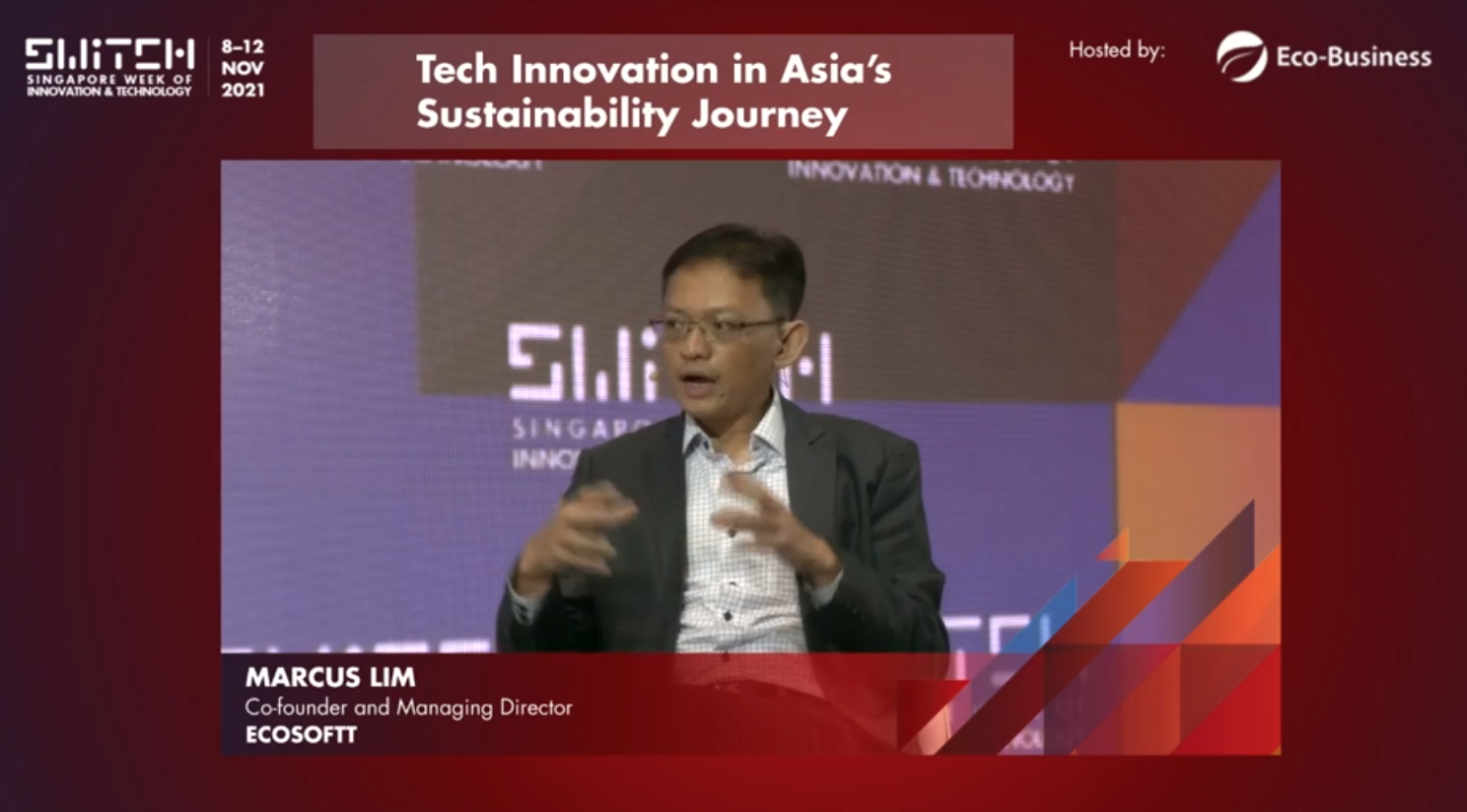
© Enterprise Singapore
How has that public-private partnership dynamics changed since your early days?
Lim: A lot has changed. When we started, there were few open innovation calls. And now there are so many of them. There are so many problems out there in the market. The problem statement for the calls either comes from government agencies or through partnerships with private organizations. As a small company, we have to be very selective of the problem statements and the kind of projects we participate in because of the limitations on resources.
Next we need to address, what happens after the technologies have been proven successful? How are we going to spur the mass adoption of these technologies? Because that's ultimately what's going to solve our sustainability problems. How do you actually make the technologies more robust? How do you actually bring down the cost? How do you get adoption at scale, in Singapore and internationally?
How do you make the technologies more robust, bring down the cost? How do you get adoption at scale?
That's where we need even more public-private partnership, not just in terms of policy settings, but also potential investors and adopters who can actually bring it out to different parts of the world.
Ted, what are the challenges in achieving sustainability targets there and, how can public-private partnerships help to counter these challenges?
Howland: One of our key challenges is actually the perception of cost. Internally, we developed our metric called “return on sustainability,” which requires the demonstration of the long-term benefits of incorporating sustainability into the design metrics. This is overall a work in progress.
To date, we found cost savings of about $270m, which is a fairly significant sum, and have also received additional interest savings on our financing. This is one of the perceptions.
As technology and public-private partnerships play a bigger role in addressing sustainability issues, what is next for your industry?
Howland: Leveraging our global network, we will continue to seek new ideas for our CapitaLand Sustainability X Challenge and the Smart Urban Co-innovation Lab. For example, the smart lab brings together the users and providers of the technology in a real world setting so they can identify, develop, demonstrate and market solutions.
We work closely with our financial partners, banks, investors to look at innovative solutions to deploy capital to advancing technologies. We will also continue to engage our stakeholders including our employees, investors, customers and communities through our 2030 Sustainability Master Plan targets; and collectively push for transformational change to make a difference in the communities we operate in.
Lim: Two priorities for us. The first is technology. We are developing technologies that can close multiple resource loops at the building and factory level. Today, we are closing a lot of the water loops and can reuse water over and over again within a building. Now we're looking at ways that we can maximize the resources available, conserve the nutrients in the water and to use as little energy as possible, or in fact to create positive energy, as part of the waste management process. That’s what we call the water, energy, foods, materials nexus in a decentralized level.
The second is how we can bring the technologies and solutions to those who really need them in the most underprivileged communities. It’s a huge problem, especially for the many billions living in developing countries and African communities. But as entrepreneurs, we like to look at that as opportunities. If we can bring down the cost of adopting such solutions, we can make it easy, we make it viable; then we have really an unlimited market.
Paglia: From a Microsoft perspective, it's about who we believe can go faster and further; to bring everybody along on that journey with you. Everything we're doing is around having that technology available for people to use, empowering them.
One of my favorite examples is the Snow Leopard Trust program where we’re able to not just stop the decline of the species, but also to reverse it a little bit through geospatial mapping. Our carbon innovation funds are available for carbon technology like carbon sequestration.
This is just touching on some of the surface of some of the technologies that we have available. But to make all of this possible, we need the industry leaders to meet us because we are the technology enabler. You’ve got to be very specific about what you need that technology to do. And so, that's why we really need to be working with customers and partners in this space.
Marcus, how has your experience been, being a Singapore-based startup operating in various countries?
Lim: Based in Singapore, and we have operations across Southeast Asia, India and Hong Kong; I would say Singapore is probably the best place for us. At least in my sector, Singapore is quite well known to have succeeded in addressing its water challenges through investments in technology and infrastructure. That has given us a very good head start in terms of branding ourselves.
If we can bring down the cost of adopting such solutions, make it viable; then we have an unlimited market
Secondly, this whole innovation ecosystem that we talked about has evolved and improved over the last few years. That has been very helpful for us to access sites to demonstrate our technologies. The government resources are available too, in the form of grants to defray part of the cost of the development efforts.
Thirdly, there is a lot of collaboration between Singapore government agencies and the agencies of foreign governments. Before Covid, we had lots of visitors every week. We have had delegations of officials and private sector participants in the water sector coming to Singapore to learn from the Singapore experience. So, that has been very helpful for us in terms of obtaining market information and providing opportunities for us to market the solutions to potential adopters.
Compared with Singapore, how is it like to be operating in other countries?
Lim: Two-thirds of the world's populations are already living in water-scarce conditions. As we go to these markets, whether it's Indonesia, Vietnam, or India, they face similar challenges. But the context is often quite different. Singapore is a small country and highly developed, and we can develop infrastructure in the form of sewer network and so on.
This is much more difficult to achieve in developing countries. While we take on the technologies and the kind of principles of how we manage water and sustainability in Singapore, we have to actually be very mindful of context in the local countries.
Secondly, the cost and the economics are different. The ability to pay for any of this kind of situation is far lower. So, we actually have to find ways to bring down the cost of our solutions very much through ways of localization, local manufacturing and installation.
How do you reconcile the effort to transition to a sustainable system when non-environmental methods are at times more efficient, and far cheaper?
Howland: The non-sustainable approaches are not necessarily cheaper in the long term. We can see what's happening to the planet now – the rising temperatures, floods, fires and hurricanes. All of these have impact on the built environment.
There's a huge cost associated with this, which is not being factored into the equation. I'll use the term “false comparison.” Just like with the return on sustainability, people are focusing on that initial cost of adoptionand completely forgetting the other side of the equation.
What are some measures that your company has put in place to help verify the sustainability claims with the help of technology?
Paglia: There are lots of different ways we're measuring the impact and you can see some of the results so far in our sustainability report released in 2020. Some of the measures are about carbon, water and waste in our data centers, as well as our products across the supply chains.
There is also a problem of how to make all that data reportable. This is part of the public preview that we're going through right now. We've tested with customers. With these massive data sets, we have to use the right calculators and the right modeling to do the scenario-planning, so as to understand all that reporting, and to report that in the right way.
Lim: Technologies are traditionally not in water. Now, they have come or become applicable in the water space, information technology, for example. The prices of sensors and meters have dropped to a level where it makes sense for us to deploy these kinds of technologies and devices in our systems. We can measure, not just electricity consumption, not just water being treated, but also the quality of the water and send signals about the performance of every piece of mechanical equipment. So, the capability to capture data is very useful, and it's coming in a big way, going forward. The benefits of this, as shown by all these indicators, will far outweigh the cost of initial adoption.
